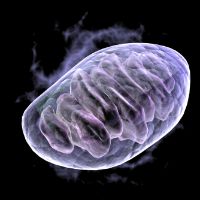Known as the “cellular powerhouse,” mitochondria generate most of a cell’s biochemical energy; as well, the organelles regulate cell death (apoptosis). Recent evidence suggests that mitochondrial defects may be linked to severe muscular and nervous disorders, neurodegenerative diseases, and aging itself. Employing a fruitfly model, Deniz Senyilmaz, from the German Cancer Research Center (Deutsches Krebsforschungszentrum; Germany), and colleagues discovered a complex biological control mechanism that regulates the fusion – as well as fragmentation – of mitochondria and thus perhaps their performance. The team observed that the transferring receptor (TFR1), which binds stearic acid, is a key element in the control mechanism. The investigators observed that by adding stearic acid to the fly food, the animals’ mitochondria fused; when they kept fatty acid levels low, the organelles fragmented. They also replicated these findings in a human cancer cell line. Observing that: “We find that animal cells are poised to respond to both increases and decreases in [stearic acid] levels, with increased [stearic acid] dietary intake boosting mitochondrial fusion in vivo,” the study authors submit that: “Intriguingly, dietary [stearic acid] supplementation can counteract the mitochondrial dysfunction caused by genetic defects.”
Tweaking Mitochondria via Nutrition
Deniz Senyilmaz, Sam Virtue, Xiaojun Xu, Chong Yew Tan, Julian L Griffin, Aubry K. Miller, Antonio Vidal-Puig, and Aurelio A. Teleman: Regulation of mitochondrial morphology and function by Stearoylation of TfR1. Nature, July 27, 2015.




